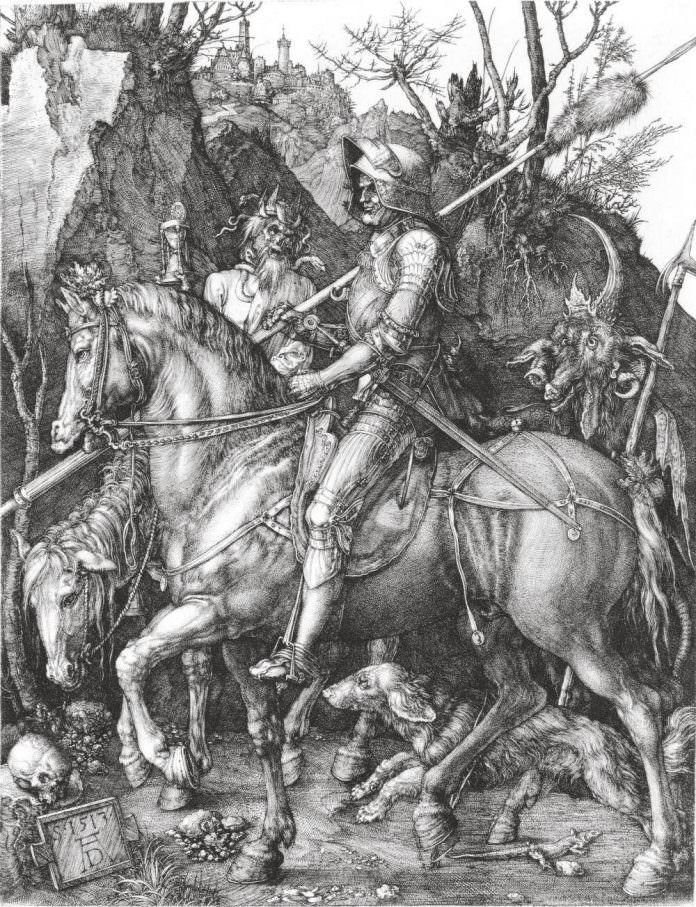Durer and the Renaissance between Germany and Italy

Albert Durer, Knight, Death and the Devil
TO lbert Durer (1471-1528) the great artist from Nuremberg is on display at the Royal Palace of Milan until 24 June 2018 in the review " Durer and the Renaissance between Germany and Italy ". 130 works to know its qualities in the different techniques practiced: painting, drawing, graphics. Works that geographically fit both in the iconic culture of northern Italy and in that of the Netherlands. And historically between the end of the 400 and the beginning of the 500. But there are not only creations of the German author. He is flanked by contemporary painters like Lucas Cranach and Italian painters. Giorgione, Mantegna, Leonardo da Vinci, Giovani Bellini and Lorenzo Lotto .
The exhibition is divided into thematic sections. It begins with the relationships that Durer had, starting from 1490, with Venice in particular. "Measuring Surveyors and Architecture" are the themes of the second part. We continue with "Discovering nature, discovering the world". The exhibition continues with "The discovery of the individual", then we move on to "Durer the engraver: the apocalypse and the Christological cycles". To end in "Classicism and its alternatives". As for the previous proposals, I would like to elaborate that has always struck me. The burin engraving on the copper plate of 1513, The Knight, Death and the Devil , which Sciascia explicitly inspired in 1989 in his novel The Knight and Death published by Adelphi.

Albert Durer, Jesus among the doctors
The engraving has been the subject of various interpretations. Although there seems to be no doubt in decoding the image of the knight: the miles christianus. The courageous Christian soldier, with the long-eared dog perhaps symbol of faith and the look that seems to imitate that of the master, advances proud and impassive towards his goal. Regardless of solitude. Flanked by Death riding a nag and shaking an hourglass, correlated objective of the very short time of life, along the path of virtue. Followed by the Devil. Durer sees it as a horrible, unwatchable animal figure.
With a long spike. A witness to the evil that man can do. Fairness accentuated by the helmet, which does not allow him to estrange the look and the accurate perfection and majesty of the horse. Poderous, vital and elegant in its movements. Ready to follow every gesture, every solicitation of those who ride it and drive it straight at the end of the journey, through the reins. Nordic mythology associates the horse with the sun. The light of which expresses warlike and spiritual virtues.
Which destination? It should be the fortified city that occupies the top of the engraving. What should he represent? Heavenly homeland. The new Jerusalem. The fortress of culture that must be conquered and defended by barbarism. Or the citadel of justice according to Sciascia. The path is represented arduous, difficult. The background refers to violated rocks. At skeletal trees with the plucked roots. If there were not the background, it is Panosfky's opinion, Durer's engraving would be similar to "a cold and scholarly imitation of an equestrian statue in the manner of Pollaiolo, Verrocchio and Leonardo da Vinci".